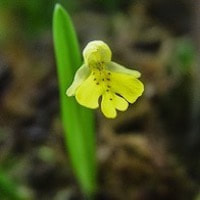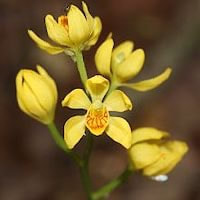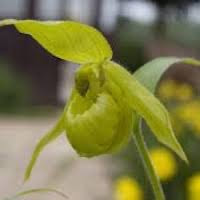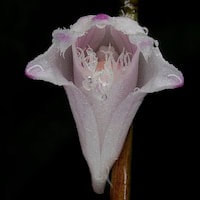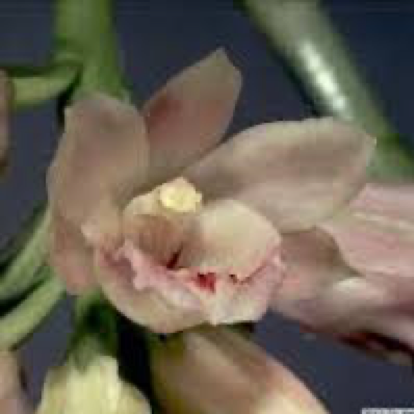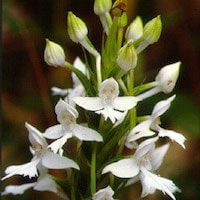WWD1- Women's Woody 1 - An Amber a day!
|
Native Singaporean Orchid notes: Oncidium Sharry Baby
Oncidium Sharry Baby, a popular orchid hybrid, is featured in the Woody 1 (Women) perfume workshop at Scentopia for team building. Created in 1983 by crossing Oncidium Jamie Sutton and Oncidium Honolulu, it is a sympodial epiphyte that grows on other plants. Known for its enticing vanilla and chocolate-like fragrance, it appeals to perfume enthusiasts and orchid lovers alike. Despite not being native to the region, its captivating scent justifies its inclusion in the workshop, adding a delightful note to the fragrances crafted there.
|
Therapeutic Orchid notes:
|
Amitostigma simplex
Amitostigma simplex, known as Huanghuawuzhu Lan in Chinese, is an orchid species celebrated for its distinct fragrance. It thrives on grassy slopes at elevations between 2300 to 4400 meters in western Sichuan and southwestern Yunnan. Sadly, it is classified as vulnerable on the 2006 IUCN Red List due to its rarity and threatened status, highlighting the importance of conservation efforts. Despite its endangered status, its unique scent makes it valuable for potential use in perfumery, adding to its significance in the realm of orchid fragrances. |
|
Cephalanthera falcata Lindl.
Cephalanthera falcata, known as the gold orchid or pistil above sickle leaf orchid in Chinese, is recognized for its medicinal uses rather than its fragrance. It is sourced from regions across China like Hubei, Hunan, Guangdong, Guangxi, Yunnan, and Sichuan. This orchid is valued in traditional Chinese medicine for its ability to reduce heat and fever. It is commonly prescribed to alleviate conditions such as sore throat and toothache, highlighting its importance in herbal remedies despite its fragrance not being prominently noted. |
|
Cypripedium henryi Rolfe
Cypripedium henryi, also called the green flower spoon orchid, grows as a terrestrial herb in the open scrub of China's highlands. Its distinctive spicy honey scent attracts Lasioglossum sauterum, a small black wasp. Blooming from April to May, its roots are utilized in Chinese traditional medicine under names like Longshejian (dragon tongue sword) and Jinlongqi (gold dragon seven). They're gathered in southwest China for treating ailments such as swelling, pain, and improving qi and blood circulation, showing its dual value in medicine and horticulture. |
|
Dendrobium blumei Lindl.
Dendrobium blumei Lindl., an orchid species found in Peninsular Thailand, Peninsular Malaysia (specifically in Perak), Java, Borneo, and the Philippines, is valued for its medicinal properties in traditional herbal remedies. It is particularly known for its use in treating itching skin and skin eruptions. Local communities prepare a poultice from pounded leaves and pseudobulbs of the orchid, applying it directly to affected areas to soothe discomfort and provide relief. This traditional use underscores the orchid's significance in local healing practices and its potential therapeutic benefits for skin conditions. |
|
Geodorum densiflorum (Lam) Schltr.
Geodorum densiflorum (Lam) Schltr., known as Kukurmuria to the Garo tribe in Bangladesh, Dibao Lan in China, and also as Kukurmuria in Orissa, India, is a terrestrial orchid with a broad distribution across various regions. It blooms from April to May in places like Assam, West Bengal, and the Andaman Islands, and can be found in countries such as Sri Lanka, Myanmar, Thailand, Malaysia, Indonesia, the Philippines, and Australia. This orchid is valued for its medicinal uses in different cultures. In the Philippines, its pseudobulbs are used as a disinfectant, while in Orissa, a paste made from its roots mixed with ghee and honey treats menstrual disorders. Other uses include treating insect bites in Andra Pradesh and addressing fever and diarrhea in cattle. These practices highlight the orchid's cultural importance and traditional therapeutic applications across generations. |
|
Habenaria dentata (Sw.) Schltr.
In traditional Chinese medicine (CTM), Habenaria dentata is valued for its medicinal benefits. The orchid's stems are believed to have diuretic, anti-inflammatory, and detoxifying effects, beneficial for lungs and kidneys. They are used to treat various conditions including weak kidneys, impotence, stomach ache, orchitis, dysuria, swollen kidneys, skin abscesses, and tuberculosis-related coughs. Harvested in autumn, Habenaria dentata reflects traditional medicinal practices, underscoring its cultural importance and therapeutic value in traditional Chinese medicine. |
Other scent note
Aroma from Amber, Mandioca, Cupuacu root, elemi, copal
Scentopia Library Reference ingredient
Oakmoss - Check details at Scentopia's scent library
Download the guided mediation that works best with this Orchid fragrance oil
| women_woody_essential_oil_orchi_00001.mp3 | |
| File Size: | 39450 kb |
| File Type: | mp3 |

